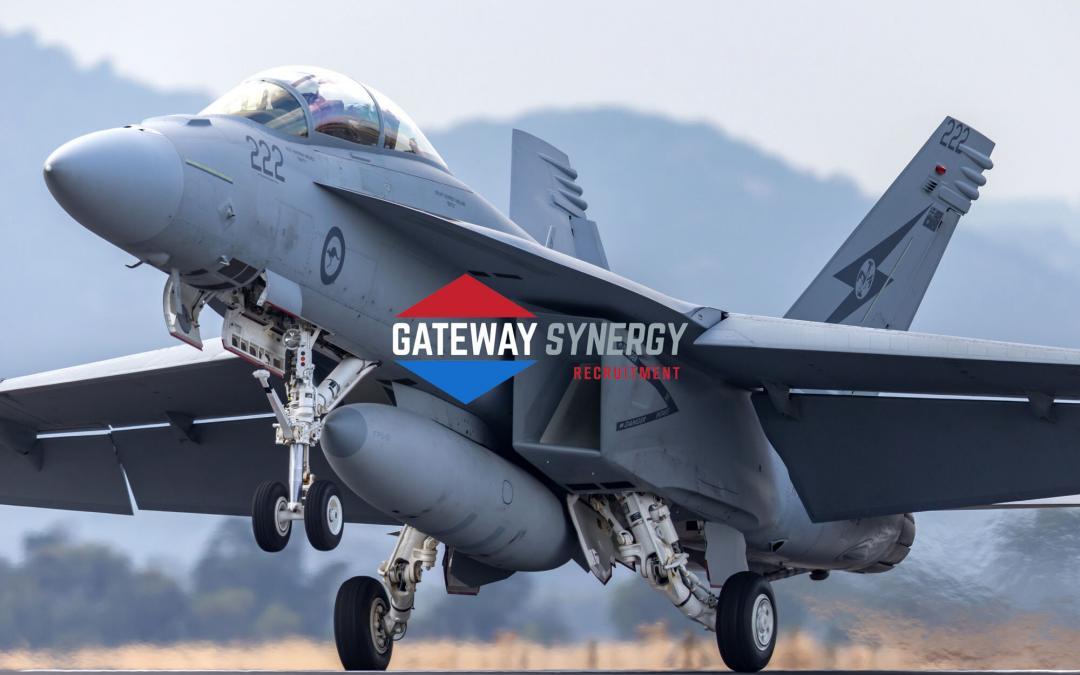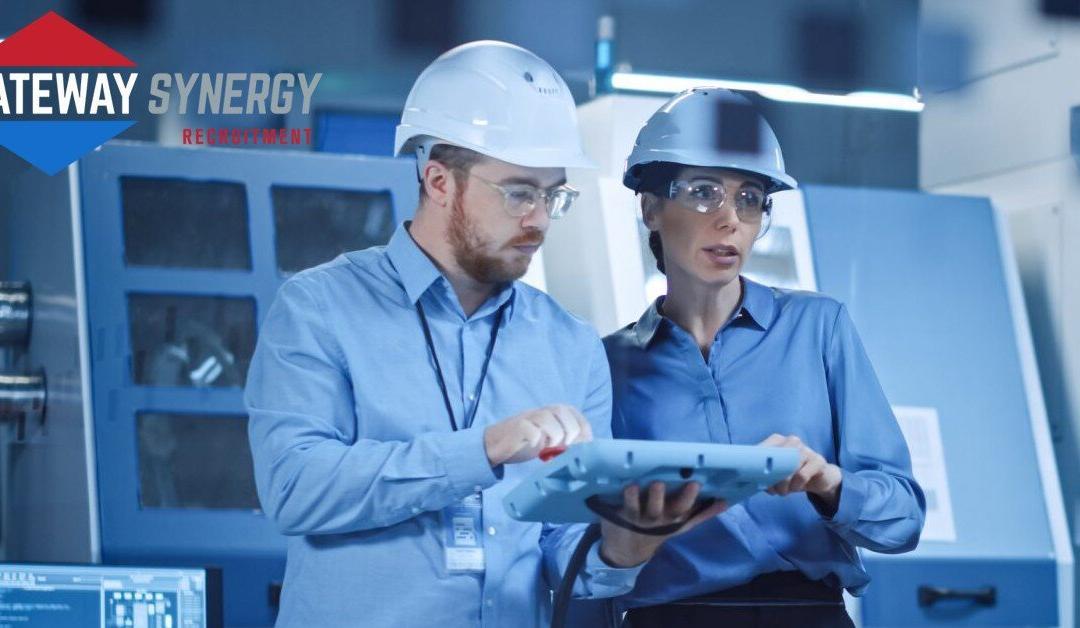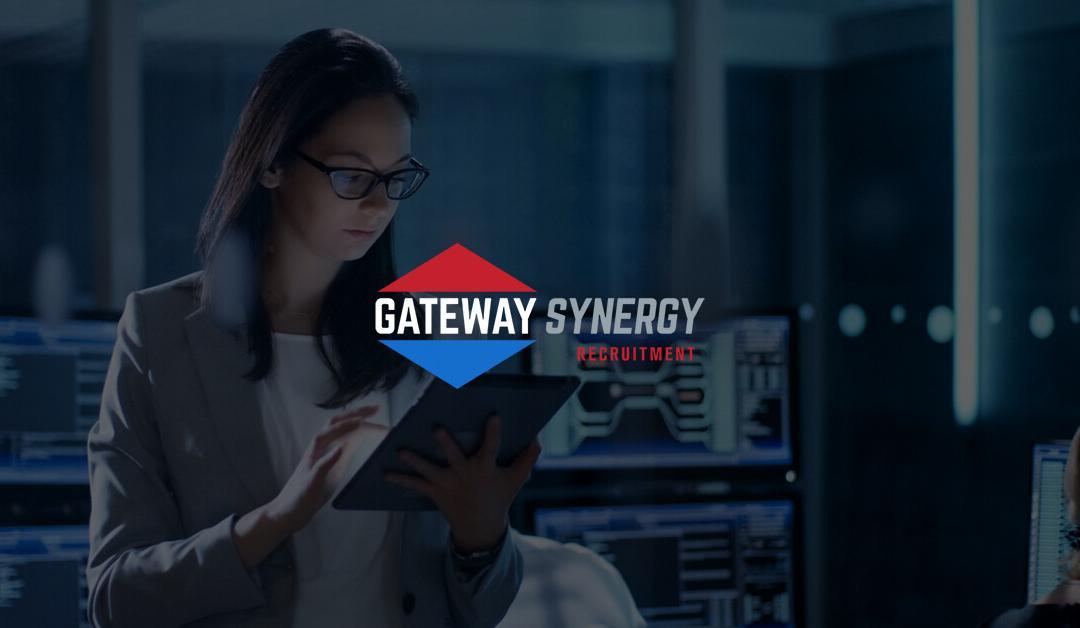
by Josh Seaman | Dec 15, 2022 | Defence
The Aerospace sector of the Defence Industry is an integral component for the security and safety of Australia. Aerospace jobs are highly sought-after and include positions in the Army, Navy, and Air Force. The best paying Aerospace jobs tend to be at senior level positions such as Aerospace Engineers or Managers.
Recent strategic objectives of the Australian Government have focused on increasing Aerospace capabilities. To achieve this, the Government has identified Aerospace as a critical shortage area and introduced various projects to address this need. As part of these initiatives, the Government has increased funding for Aerospace research and development projects, worked with industry partners to provide more Aerospace training opportunities and invested in technology upgrades.
These efforts are helping to ensure that Aerospace personnel have the knowledge and skills needed to help Australia meet its Aerospace security objectives. With more job opportunities available, those interested in Aerospace careers can look forward to a bright future in the Defence Industry Aerospace sector.
As an Aerospace professional working in the Defence Industry, you can expect to earn competitive salaries with career growth potential. In addition, you may have the opportunity to work with the US Defence Force on Aerospace projects and strategic partnerships. The Aerospace sector holds great promise for those looking to be a part of Australia’s defence industry. Ultimately, Aerospace professionals in the Defence Industry are helping to ensure that Australia remains safe and secure. With an ever-evolving Aerospace industry, Aerospace personnel will be in high demand to help Australia reach its strategic Aerospace objectives.
The Aerospace sector of the Defence Industry is an integral component for the security and safety of Australia. Aerospace jobs are highly sought after, ranging from positions in the Army, Navy and Air Force to Aerospace Engineers and Managers at senior levels. Aerospace professionals in this sector can expect to earn competitive salaries with career growth potential as well as having the opportunity to work with America’s Defence Force on strategic partnerships.
Recent strategic objectives of the Australian Government have focused on increasing Aerospace capabilities, identifying Aerospace as a critical shortage area and introducing various projects to address this need.
As part of these initiatives, the Government has increased Aerospace research and development funding, worked with industry partners to provide more Aerospace training opportunities and invested in technology upgrades. These efforts are helping to ensure that Aerospace personnel have the knowledge and skills needed to help Australia meet its Aerospace security objectives. With more job opportunities available, those interested in Aerospace careers can look forward to a bright future in the Defence Industry Aerospace sector. Ultimately, Aerospace professionals in the Defence Industry are helping to ensure that Australia remains safe and secure.
The Australian Government and Defence Force have demonstrated great interest in the B-21 Raider, a long-range strike platform developed by the US Air Force. The program is expected to support the development of a fifth generation stealth bomber that can penetrate enemy air defenses with greater agility and precision. The B-21 Raider is expected to provide Australia with an advanced strategic capability, enabling it to conduct operations across all domains including land, sea, and air.
In addition to its primary mission as a long-range strike capability, the B-21 Raider is also being designed for maritime surveillance, electronic warfare, and even intelligence gathering operations. The platform has been designed to fly at high altitudes in order to minimize its radar signature while still providing effective coverage over large areas of interest. The aircraft will be equipped with advanced sensors and other technologies that will enable it to detect targets of opportunity and launch precision strikes. The B-21 Raider’s ability to respond quickly in multiple environments makes it an ideal asset for Australia’s defence capabilities.
Australia’s commitment to the B-21 Raider program demonstrates its continued interest in developing new Aerospace capabilities that can provide greater security against threats in our region. The aircraft promises to offer improved defensive capabilities with enhanced range and flexibility compared to current platforms, making it an attractive option for both combat missions and training exercises. The impressive speed of this fifth generation fighter provides Australia with an edge against potential adversaries as well as increased survivability due to its extensive array of active protection systems.
The introduction of the new B-21 Raider platform will allow Australia’s Defence Force personnel access to world class technology for maximum efficiency when conducting operations around the globe. This cutting edge platform is sure to improve Australia’s overall response time during global conflicts or regional engagements while providing superior defending capabilities from any form of attack by hostile forces.
The F-35 Joint Strike Fighter Program (JSF) is a highly advanced and technologically sophisticated multi-role aircraft program initiated by the US Government that has been designed to strengthen air combat capabilities of the United States and its allies. The aircraft is the world’s most advanced combat jet, with features such as an integrated avionics system, stealth technology, supersonic speed and multi-role capabilities. The F-35 program includes three separate aircraft models: The F-35A conventional take-off and landing variant; The F-35B short take-off and vertical landing variant; The F-35C carrier variant.
The primary contractor building the aircraft is Lockheed Martin, while Northrop Grumman, BAE Systems and Pratt & Whitney are responsible for the manufacture of subsystems such as the engine, radar systems and weapons. The US Government has invested billions of dollars in research and development of the Jet to ensure it meets or exceeds all expectations. This investment resulted in significant improvements to performance, range, payload capacity and survivability over previous generations of fighter aircraft.
Australia is one of nine partner countries involved in this program, along with Canada, Denmark, Italy, Norway, Netherlands, Turkey, United Kingdom and United States who are actively engaged in development activities on the project. Through their involvement in this program Australia has been able to develop new skillsets within their workforce that are applicable not only to the aerospace sector but also other industries across multiple areas such as research & development (R&D), engineering & manufacturing (E&M) and test & evaluation (T&E).
Australia’s participation in this program demonstrates their commitment towards strengthening global defence capabilities through collaboration with likeminded countries. The government has signed an agreement with Lockheed Martin which outlines a series of commitments and establishes an enduring partnership between Australian industry members and Lockheed Martin on aspects relating to long term sustainment activities for the Aircraft fleet operating within Australia. This agreement enables important local jobs for Australians working in both large companies as well as smaller businesses who are part of this Defence Industry Aerospace sector.
The F-35 platform is sure to improve Australia’s overall response time during global conflicts or regional engagements while providing superior defending capabilities from any form of attack by hostile forces. The F-35 Joint Strike Fighter Program is an important asset for Australia in terms of defence and international collaborations, with its introduction set to change the face of modern Defence as we know it. The partnership between countries involved in this program should be seen as a model for successful collaboration and shows what can be achieved when nations work together towards common goals. With the continued development of new technologies, the possibilities are endless in terms of capability and range that this aircraft provides. The future looks bright for the F-35 program and is sure to be a key element
If you are looking to join the Aerospace sector of the Defence Industry, it is important to research and understand the job opportunities available in Aerospace. With more Aerospace jobs being made available each year, there has never been a better time to pursue an Aerospace career. Take action today and explore the Aerospace Defence Industry!
For more information contact or visit www.gatewaysynergy.com.au

by Josh Seaman | Dec 14, 2022 | Recruitment Agencies
When preparing for a job interview, there are many tips and tricks to help you make a good impression. However, what is often overlooked is the importance of avoiding certain comments or phrases that can be detrimental to your chances of success. Here are some things not to say in interviews:
Here my tops five dont’s
1. “I don’t know” or “I’m not sure”
Interviewers expect you to have done research into the company and position so it’s important to come across as confident and knowledgeable. If you don’t know an answer, focus on what you do know rather than saying ‘I don’t know’.
2. “This isn’t my ideal role”
Interviewers want to know that you are interested in the job and will be a committed employee. If the role isn’t your ideal choice, talk about what attracted you to the role rather than focusing on what you don’t like.
3. Negative comments
Interviewers want to see enthusiasm for the role so avoid making negative comments about past employers or colleagues as it could reflect badly on you. Instead, focus on how you overcame challenges and why this job appeals to you.
4. Discussions of salary
Discussing your current or past salary can be off-putting for an interviewer and although they may ask about your expectations its best to save detailed conversations surrounding money until later in the process when an offer is made.
5. Over-familiarity
Interviewers want to get to know you but it’s important to maintain a professional distance. Avoid using slang or jokes as they may feel inappropriate and keep your body language and gestures professional too.
“So, what questions do you have for us?”
It’s the inevitable question that comes at the end of nearly every job interview — and yet it’s the one question job seekers rarely have prepared an answer to. And when people do think to prepare for this part of the interview, they often ask bland stock questions that aren’t truly important to their job hunt.
People get so hung up on preparing for the question they might get asked that they often forget to answer important questions they should have and need answers to.
Unfortunately, in a down economy, job hunters tend to adopt a scarcity mindset. If you need work, you may not be able to afford to be picky about which offer you accept, but that doesn’t mean you have to approach the interview from that frame of mind, LIKEWISE in a candidate’s market you need to avoid posturing in a verbal sense, the mindset should be the same in both a candidate’s and client driven markets, always the same preparation and process and understanding your power of right of refusal once offered.
Rather, if you ask questions as though you are weighing the offer of this job against other offers (whether you are or not) you’ll be in a better position to know if the job is a good fit for you and how you can best succeed with the company.
Remember: The power in these situations is with the listener, so you can end on a powerful note by asking thoughtful, insightful questions that not only make the interviewer think, but give you answers you need to make a choice about whether or not to accept the job.
Here are my top five do’s:
1. Which of my skills do you see as most important for the challenges that come with the position?
2. How will the company help me develop?
You don’t want to simply apply your skills; you also want to improve and learn new things. Make sure there is a plan or a support system to ensure this happens before you accept the job. This can come in form of support for continuous professional development or other support such as coaching or mentoring schemes. Asking this question also shows the interviewer that you’re interested in self-improvement and growing with the company.
3. Can you tell me a little about the team I’ll be working with?
This is an excellent question to address the culture of the company — without actually asking about the “culture” of the company. You might find you get a very different answer than what’s printed in the company’s mission statement or on their website. It will help you to understand how well you fit in with the company, and psychologically it’s a great question to ask because it gently assumes you’ll be getting the position.
4. What constitutes success with this position and company?
This is a great way to demonstrate that you’re interested in succeeding (not just punching a time clock) but it also gives you key insights into the expectations of the position and the culture of the company.
5. Do you see any gaps in my skills or qualifications that I need to fill?
This is a bold, gutsy question. Not everyone is going to be confident enough to ask it, which is going to set you apart from the competition. To the interviewer, it shows that you’re a bold thinker and demonstrates that you’re willing to fill any gaps that might exist. For you, the worst-case scenario is that there are gaps that will preclude you from getting the job, but that’s valuable information to take into your next interview. In the best case, the interviewer won’t have any answer, and hopefully you’ll be shortlisted for the position!
Some interviewers may consider this portion of the interview a “throwaway,” answering easy questions about salary, benefits, time off, etc. But for the applicant, it’s an excellent opportunity to stand out, get important answers you need to know if you’re a good fit for the job, and demonstrate that you’re an individual, not just a resume in a pile.
Of course, you don’t have to wait until the end to ask your questions. In fact, it is much better (and much more natural) if you cover these questions during the interview.
As always, I’d love to hear your views. Have you got any other key questions a job hunter should ask the potential employer in an interview?

by Josh Seaman | Dec 6, 2022 | Defence
The Marine Engineering sector plays a vital role in the Australian Defence Force and defence industry, providing world-class service to the country. Marine Engineers and Technicians are responsible for maintaining, operating and repairing ships and other marine vessels within Australia’s naval fleet and beyond.
This rewarding profession is paid well, with the average annual salary ranging from $60k-$100k in the NAVY depending on experience. With numerous roles available, there has never been a better time to join the defence force or defence industry as a Marine Engineer or Technician where you can earn in the hundreds of thousands of dollars PA with further training and qualifications that are relevant in the Australia ship building sector.
Current challenges in this sector include managing recruitment processes such as background checks as well as handling various technical aspects; however these issues can be easily overcome with proper training and support from experienced professionals.
Furthermore, the Australian Government has recently announced a major increase in defence spending, which is expected to bring significant growth and higher levels of investment into Marine Engineering. This means more jobs and better opportunities for those already working and considering a career in this area.
Marine engineering jobs are essential in ensuring Australia’s ship building capabilities remain strong. As such, Marine Engineers and Technicians play an important role in helping maintain the country’s defence capacity as well as providing invaluable services to the Navy. With plenty of job openings available across Australia, now is the time to take advantage of these great opportunities!
All in all, Marine Engineering provides rewarding careers with excellent pay and job security, making it an attractive prospect for many aspiring professionals. With increasing demand and investment in the sector, there has never been a better time to get involved!
Data from LinkedIn shows that Marine Engineering is one of the most sought-after professions in Australia, with more than 2000 jobs advertised across all six states. Queensland holds the highest number of jobs at over 500 postings, followed by Victoria and New South Wales. Meanwhile, Western Australia holds around 300 positions while South Australia and Tasmania have less than 100 roles available each. Therefore, depending on which state you live in, there could be plenty of opportunities waiting for you!
In conclusion, Marine Engineering offers rewarding career prospects with great pay and job security throughout the Australian defence force and industry. With an increasing demand for qualified professionals and higher levels of investment, Marine Engineers and Technicians are more important than ever for the country. So, why not take advantage of these amazing opportunities and make a difference in Australia’s defence capacity!
For more information checkout gatewaysynergy.com.au careers page for more information.

by Josh Seaman | Nov 4, 2022 | Defence
ALLOCATION OF FUNDS
Above the line refers to the areas of the budget where money is allocated for discretionary spending, while below the line refers to the mandatory spending that makes up the majority of government spending. The above the line/below the line distinction is important because it reflects the different ways in which money can be spent. Above the line spending is voted on by parliament and can be changed or cancelled relatively easily, while below the line spending is set in stone and cannot be easily changed. This difference in flexibility reflects the different priorities of above and below the line spending. Above the line spending is focused on things like defence and government administration, while below the line spending is focused on things like social welfare and healthcare.
The different priorities of above and below the line spending are also reflected in the different ways in which money is raised. Above the line spending is funded by taxes, while below the line spending is funded by government borrowing. This difference reflects the different priorities of the two types of spending. Above the line spending is seen as more important, since it is necessary for running the government and defending the country. Below the line spending is seen as less important, since it is not necessary for running the government or defending the country. This difference in priority means that above the line spending is more likely to be funded by taxes, while below the line spending is more likely to be funded by government borrowing.
This difference in funding can have serious consequences for the economy. Above the line spending is funded by taxes, which means that there is less money available for private sector investment. This can lead to a decrease in economic growth and an increase in unemployment. Below the line spending, on the other hand, is funded by government borrowing, which means that there is more money available for private sector investment. This can lead to an increase in economic growth and a decrease in unemployment.
Above and below the line spending can also have serious consequences for government debt levels. Above the line spending is funded by taxes, which means that government debt levels will increase if there is a shortfall in tax revenue. Below the line spending, on the other hand, is funded by government borrowing, which means that government debt levels will increase if there is a shortfall in borrowing capacity. This difference in funding can lead to a significant increase in government debt levels over time.
Above the line and below the line spending is also reflected in the different ways in which money is allocated for defence. Above the line spending is focused on things like military hardware, while below the line spending is focused on things like personnel and pensions. This difference in focus reflects the different priorities of above and below the line spending. Above the line spending is focused on defending the country, while below the line spending is focused on taking care of the people who defend the country. This difference in priority means that above the line spending is more likely to be focused on military hardware, while below the line spending is more likely to be focused on personnel and pensions.
ALLOCATION OF RESPONSIBILITIES
Above the Line (ATL) organisations are working on behalf of the Commonwealth (Defence). When the Australian Defence Force (ADF) has a capability requirement, ATL companies help Defence define it, acquire it and sustain it. ATL people tend to approach projects at a concept level, and help Defence evaluate their needs and assess outcomes.
Below the Line (BTL) organisations, on the other hand, are tasked with delivery of the contracted capabilities. They’re the ones who get into the detailed design and delivery aspects of a given piece of equipment or system.
ABOVE THE LINE
The role of ATL organisations is to understand the higher-level capabilities required by the ADF, assist in the concept development, management of the tender process, contract negotiations, governance and reviews, and ensure the project is properly delivered. It’s important to note that this work is always being undertaken on behalf of Defence.ATL will help the ADF define what the capability requirement is and develop a Request for Tender (RFT). ATL also contribute to tender evaluation to make sure that Defence engages the right BTL solution.Commonly, Defence appoints ATL support through the Capability Acquisition and Sustainment Group’s (CASG) Defence Support Services (DSS) panel
BELOW THE LINE
Once a tender has been released to market, it’s up to BTL to bid for it.
BTL organisations interested in winning the project will put in a bid for the work, including planning, designing, and presenting a solution that they believe meets the capability requirement. After a thorough assessment and negotiation phase, the successful BTL company will be awarded the contract. That’s when they can get cracking with the project.
The role of BTL is to build, test, integrate, and coordinate the completion and delivery of the capability throughout the tender process. The details they need to deliver on include timelines, budget, workforce, and project specifications. The ATL organisations will work with them to oversee the delivery phases, assess their progress, and give feedback according to the needs of the ADF.
The department responsible for above the line defence spending is the Ministry of Defence. This ministry is responsible for allocating money for things like military hardware, and it is responsible for ensuring that the military has the resources it needs to defend the country.
The department responsible for below the line in defence spending is the Ministry of Defence. This ministry is responsible for allocating money for things like personnel and pensions, and it is responsible for ensuring that the military has the resources it needs to take care of the people who defend the country.
If you’re considering a career in the defense industry, then it’s important to consider the above, working above or below, public or private will have a very different feel and responsibilities to the job. For more information regarding defence industry jobs contact Gateway Synergy Recruitment for a free discussion or visit www.gatewaysynergy.com.au

by Josh Seaman | Oct 28, 2022 | Defence, Employment Agencies
Cybersecurity is one of the most important issues facing Australia today. The Australian Defence Force and the defence industry are on the front line of this battle, and they need skilled cybersecurity professionals to help them protect our country.
The cyber sector looks set to take out the title of sector to experience the most significant growth over the next decade. With the announcement of Project REDSPICE comes a $9.9 billion investment to bolster the Commonwealth’s offensive cyber capabilities and its detection and response network.
The cyber talent pool will need to grow significantly over the coming years to respond to this growth strategy. It is crucial to understand what the candidate market looks like now so that jobseekers make the best-informed career decisions, and hiring managers make smart hiring decisions.
GATEWAY SYNERGY research suggests that there are many different types of cyber jobs available in Australia with the below data informing us, the ACT, which traditionally houses the majority of ICT workers, holds just 1,300 workers, 7% of the population. Just 19% of the cyber workforce are women in ACT, compared to 23% in VIC and NSW, and 22% nationally.
Demand for cyber skill sets is high across NSW, VIC, ACT and QLD but only moderate in WA and SA. The proportion of cyber professionals who work in the defence industry is just 2%. This is in comparison to 34% who work in the Information Technology & Services industry.
If you’d like working in the Defence Cyber Security Centre, joining ASIO’s Cyber Surveillance team, whatever your skills and experience, there’s a place for you in Australia’s fight against cybercrimeIf you’re interested in a career in cybersecurity, take a look at some of the available Cyber Jobs in the Australian Defence and Defence Industry. With so many different organisations working to protect Australia from cyber threats, there’s sure to be a role that’s perfect for you. Cybersecurity is a challenging and rewarding field, so if you’re up for the challenge, apply for one of these Cyber Jobs today.
ASIO is Australia’s national intelligence organisation. We work to protect and defend Australia and its people from espionage, foreign interference and terrorism. As part of our Cyber Surveillance team, you’ll use your skills and experience to monitor, detect and disrupt threats to Australia’s national security. You’ll be working at the cutting edge of cybersecurity, using the latest technology to keep our country safe. If you’re interested in a career that makes a difference, join ASIO today.
DFENCE CYBER JOBS
– Cyber Security Specialist: https://www.defencejobs.gov.au/jobs/cyber-security-specialist
– Information Warfare Officer: https://www.defencejobs.gov.au/jobs/information-warfare-officer
– Cybersecurity Analyst: https://www.defencejobs.gov.au/jobs/cybersecurity-analyst
– Cybersecurity Engineer: https://www.defencejobs.gov.au/jobs/cybersecurity-engineer
– Cybersecurity Consultant: https://www.defencejobs.gov.au/jobs/cybersecurity-consultant
ASIO CYBER SURVEILLANCE TEAM
As part of ASIO’s Cyber Surveillance team, you’ll use your skills and experience to monitor, detect and disrupt threats to Australia’s national security. You’ll be working at the cutting edge of cybersecurity, using the latest technology to keep our country safe. If you’re interested in a career that makes a difference, join ASIO today. To find out more about careers in ASIO, visit: https://www.asio.gov.au/careers
China Cyber Threats
China is one of the biggest cyber threats to Australia. They have been responsible for major cyber-attacks on Australian businesses and government agencies, including the Australian Defence Force. Chinese hackers are also becoming more sophisticated, and they are now targeting small businesses and individuals as well as large organisations. If you’re interested in a career in cybersecurity, you could help protect Australia from China’s cyber threats.
Russian Cyber Threats
Russia is another major cyber threat to Australia. They have been behind some of the biggest and most sophisticated cyber attacks in recent years, including the NotPetya attack which caused billions of dollars of damage worldwide. Russian hackers are also increasingly targeting small businesses and individuals, so if you’re interested in a career in cybersecurity, you could help protect Australia from Russian cyber threats.
Local Cyber Crime
Cybercrime is a big problem in Australia, and it’s only getting bigger. Organised crime groups are using increasingly sophisticated methods to steal data and money from businesses and individuals, and they’re targetting small businesses more and more. If you’re interested in a career in cybersecurity, you could help protect Australians from cybercrime.
Cybersecurity is a vital part of Australia’s defence against threats both domestic and foreign. Join the fight and apply for a Cyber Job today. If you’re looking for a challenge and want to use your skills to help keep our country safe, consider a career in cybersecurity. You could be the one we’re looking for…
Checkout Gateway Synergy Recruitments active roles @ gatewaysynergy.com.au






Recent Comments